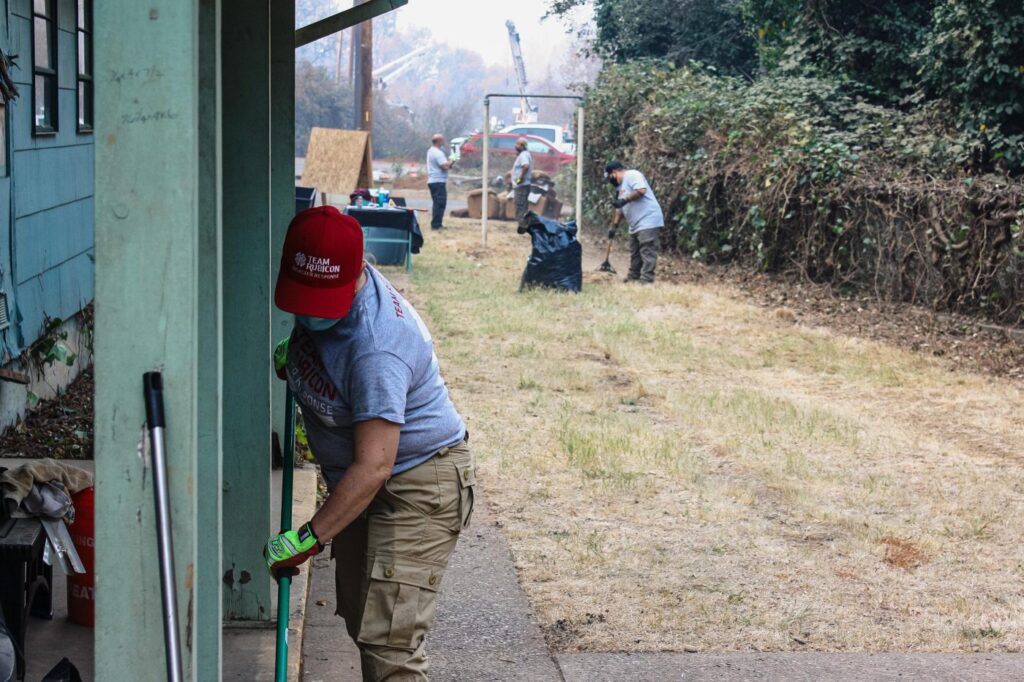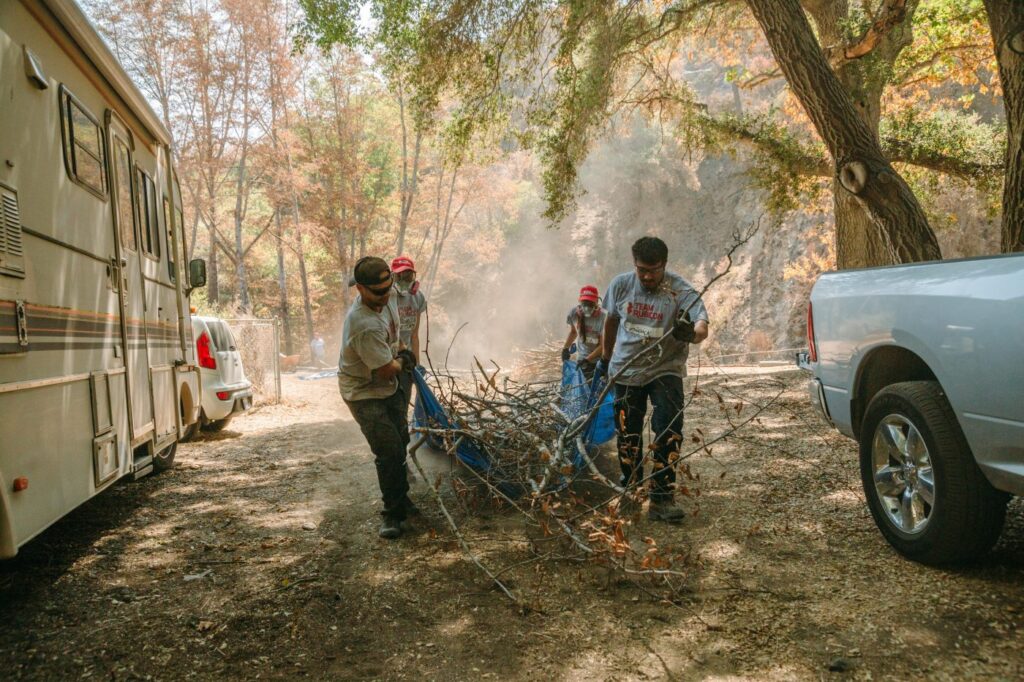Since 2000, wildfires have burned, on average, 7 million acres of American property every year. According to the National Interagency Fire Center, as of November 18, more than 7.34 million acres have burned in 62,664 wildfires so far in 2022. Millions of American homes are threatened by wildfire, though California typically leads the pack. According to the Insurance Information Institute, more than 2 million properties in the Golden State are at risk of fire. Yet there are fire mitigation strategies that can help protect individuals and homeowners.
The Federal Emergency Management Agency estimates that every $1 spent on preventing fires and mitigating their impacts can save communities $6 in firefighting and/or repair costs. In regions with high property values, the cost savings can scale up to $40 saved for every $1 invested in fire mitigation. Not every neighborhood faces the same wildfire hazards, but there are some common steps that homeowners can use to start protecting their property right now.
Upgrade the Home When Feasible; Coat in Fire Retardant When Not
The last place homeowners want on fire is the first place they should start preparing for one: the house itself. There are many fire mitigation strategies that can be used to lessen the risk of fire and, if one does occur, minimize the damage to the home. This seems like a big job, but according to Rebecca Samulski, Executive Director of Fire Adapted Colorado, “paying attention to the little stuff makes a big difference.”
All exterior structural elements of the house, including the roof, should be made of nonflammable materials like tile, sheet metal, slate, brick, aluminum, or stone. Replacing these vulnerable surfaces with non-combustible materials will likely be the most expensive and intrusive aspect of fireproofing a home. So, any vulnerable areas constructed from flammable stuff that would be prohibitively expensive or difficult to replace, like wood siding or outside wood paneling, can and should be coated with chemical fire retardants. Replace grass immediately outside the home with gravel or flagstone.

“Home attachments are like candle wicks and need to be interrupted,” says Samulski, “attached wooden fences and decks, carports, or sheds need to be separated as potential fire fuels. For instance, wooden fences should have a metal, or otherwise non-combustible, gate installed.” Decks or wooden porches need metal angle flashing installed between them and the siding to keep embers from being caught. If the home has an attached garage, be sure the bottom of the garage door has adequate weather stripping, constructed of fire-resistant material.
Inspect the entry points to your home, like vents and chimneys and stovepipes, and ensure they all have incombustible protective screens installed. Embers can travel a long way and are small enough to find different ways inside. “If it’s big enough for a wasp to get in,” warned Samulski, “it’s big enough for embers.” All flues need mesh with an opening not wider than ½ inch. Most vents need 1/8 screening, also known as hardware cloth, except for dryer vents which need horizontal, louver-style coverings. All these vent coverings and screens can be purchased easily online and from most hardware stores.
One of the Best Fire Mitigation Strategies? Commit to Ongoing Maintenance
Once the physical structures of the house have been upgraded to fire-resistant substances, the homeowner should begin cleaning and pruning the outside features. “It can be a lot of work,” says Grand County Fire Chief Brad White, “but you can break it up into manageable weekend projects, one thing at a time.”
Start up top, clearing the roof and gutters of leaves, rubbish, pine needles, branches, and any loose, flammable materials. Any gaps, cracks, or holes in the walls or siding should be patched up, with caulk or putty, for instance. Rotten or damaged deck boards or panels need to be replaced and treated with fire-resistant paint or coating. The deck itself should be cleared of combustible items, and loose debris, leaves, and pine needles should be swept from the top of the deck and between the boards. Clean leaves, pine needles, or other flammable material from below the deck with a rake or blower and relocate anything stored beneath the deck.
“If a fire is imminent,” says Rebecca Samulski, “remove everything flammable: all patio or deck furniture, rugs, flower boxes, mulch or kindling boxes, mats, and plants; anything that can catch fire. The most important thing is: don’t wait until the fire to prepare.”
Beyond the Home: Clear Grounds and Break the Continuity of Fuel
The area immediately around the home needs to be landscaped. “You don’t want any ground fuels,” reports Chief White, “within five feet of the home.”
One of the easiest fire mitigation strategies for any homeowner is to space out vegetation so that fire doesn’t jump from fuel source to fuel source. Every structure should have a halo of space around it for the same reason: flames can easily leap from a shed to the doghouse next to it to the actual house next to that.

“You want to break the continuity of fuel,” explains Samulski, “and remove as many opportunities for the fire to spread as possible.”
Similarly, any standing flammable items should be moved away from structures. Things like picnic tables, boats, and recreational vehicles are potential fuel sources and need to be placed a sufficient distance from the house or other structures on the property. Actual fire fuel, like gasoline, propane or firewood, also should be kept from the home.
“When the fire gets into the trees,” warns White, “it’s dicey and dangerous, very quickly. The wind will fan and steer those flames to fuel sources.”
Keeping the fire on the ground, where it’s easier to quench and control, is important. Any trees or tree limbs reaching within 10 feet of any stove or chimney opening should be sawed off. Prune tree limbs up to 10 feet from the ground, and keep lawns and grasses mowed to a maximum height of 4 inches. If possible, space trees and shrubs around 18 feet apart and keep them in tiny clusters to break up the fuel continuity. Regular sweeps of the area for other fuel sources, says Samulski, can be easier if made into a game for kids or grandkids. “Send them out to look for dead trees and plant material, combustible litter or other debris, and ground vegetation connecting to any structures or tree and shrub clusters.”
Develop and Memorize an Evacuation Plan
The most important people to speak to about home evacuation plans are those in the home. Discuss what to do as a team and be sure everyone knows their routes and responsibilities. Have a contingency plan for personal injuries and make certain that people have the needed assistance evacuating. Natural disasters are unpredictable, so choose a place where everyone should meet in case people are separated from each other.
A go- or bugout-bag should be put together for each member of the home and staged in an easily accessible place for when evacuation orders are issued. Bugout-bags are emergency kits, and while the contents may largely be defined by the type of expected disaster, some items are essential and universal, such as face masks, blankets, drinking water or a water filtration system, nonperishable food, a change of clothes, a flashlight, some kind of firestarter, a multi-tool, and a first aid kit. Pack enough of everything for everyone in the house in one kit, or ensure everyone has their own bag ready. And don’t forget about prescription medications or food for the nonhuman family members.
“Plan for the size of your household,” says Chief White, “and don’t forget your animals. When you evacuate, make sure everybody is coming. If you have livestock, you have a lot of planning to do.”
Finally, know how to turn off all the utilities before evacuating and confirm that everyone knows the escape routes and safe meeting places. If there is time, prepare an “Evacuated” sign to place visibly outside the home. Above all, leave when the evacuation order comes.
Stay Informed
To maintain a survivable space before, during, and after a wildfire event, it is simply indispensable to stay informed. Know the local organizations or state agencies to check with for information, have their homepages bookmarked, and follow them on social media. Every home should have a radio available should the power and cell towers go out.
“You need to understand your risk,” says Samulski, “there aren’t enough resources to combat wildfire and home fires. We can’t put them all out.” Furthermore, there are generally not enough resources to ensure that every single resident hears the evacuation orders. “The onus is on you to figure out where your information is coming from,” warns White. “Stay informed. Work with your local public safety or emergency management offices before the fire comes.”



